
Find Help
More Items From Ergsy search
-

What is Bubonic Plague?
Relevance: 100%
-

What is the bubonic plague?
Relevance: 99%
-

Are there vaccines for the bubonic plague?
Relevance: 97%
-

How is the bubonic plague transmitted?
Relevance: 95%
-
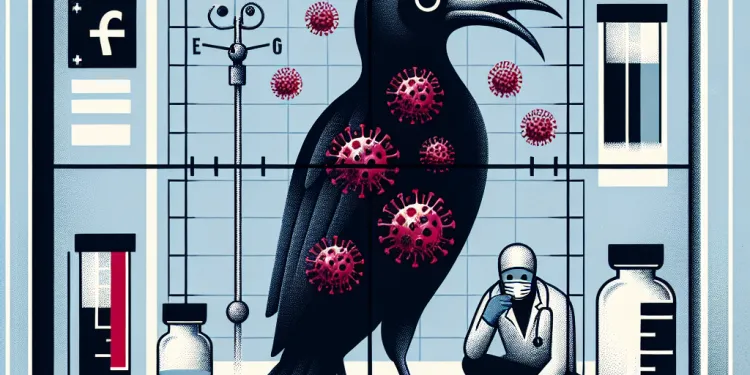
What are the symptoms of the bubonic plague?
Relevance: 94%
-

Can the bubonic plague be prevented?
Relevance: 94%
-
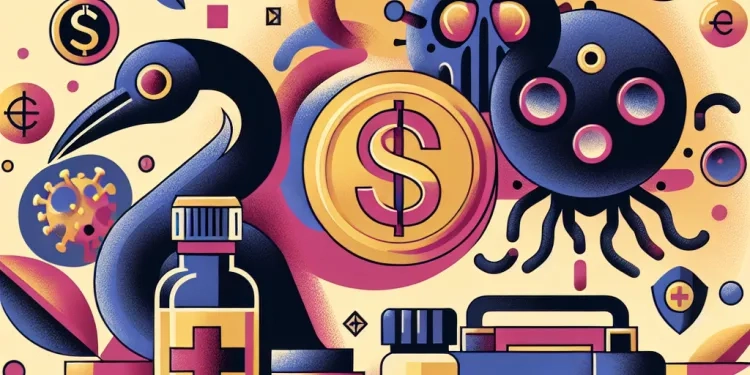
Is the bubonic plague contagious between humans?
Relevance: 93%
-

How can the bubonic plague be treated?
Relevance: 91%
-
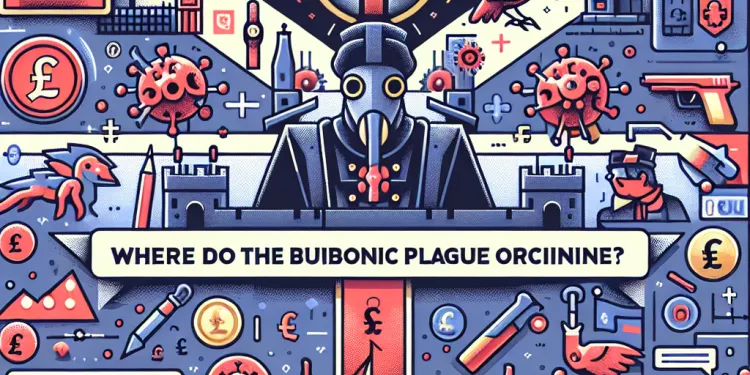
Where did the bubonic plague originate?
Relevance: 91%
-

What is the mortality rate of untreated bubonic plague?
Relevance: 89%
-

Did the bubonic plague affect only Europe?
Relevance: 88%
-

How was the bubonic plague controlled historically?
Relevance: 86%
-
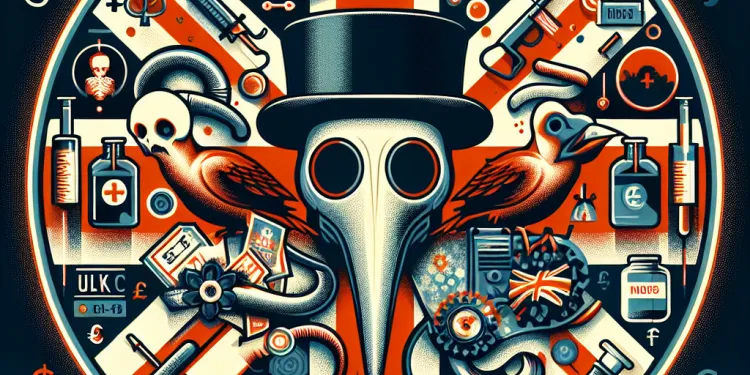
What historical event is the bubonic plague known for?
Relevance: 85%
-

Can the bubonic plague become resistant to antibiotics?
Relevance: 83%
-

What advancements have been made in understanding the bubonic plague?
Relevance: 81%
-

Are there modern outbreaks of bubonic plague?
Relevance: 67%
-
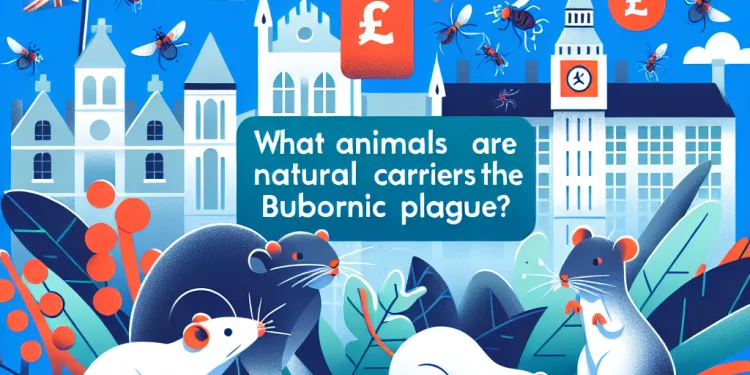
What animals are natural carriers of the bubonic plague?
Relevance: 61%
-

What is a bubo?
Relevance: 45%
-

What public health measures are important for managing the plague?
Relevance: 42%
-

Is the bubonic plague still a global health threat?
Relevance: 35%
-
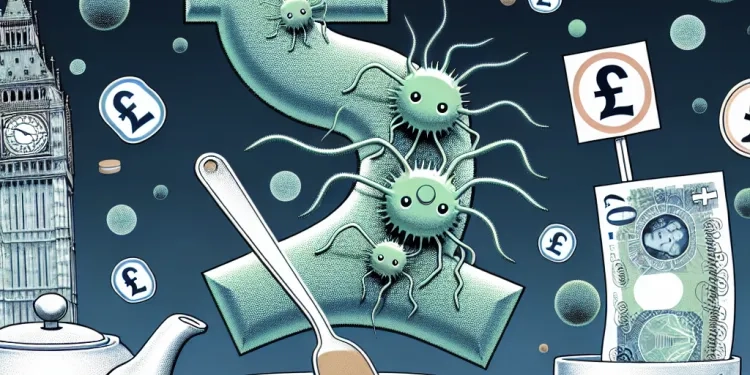
How does the bacteria Yersinia pestis survive between outbreaks?
Relevance: 9%
-
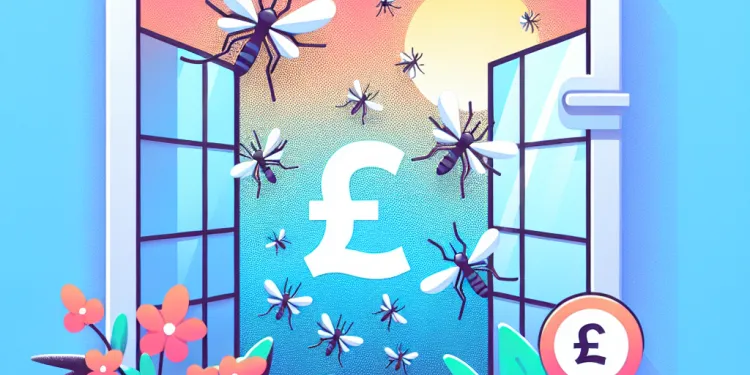
Are Mosquito window screens effective?
Relevance: 7%
What is Bubonic Plague?
Bubonic plague is an infectious disease caused by the bacterium Yersinia pestis. It primarily affects rodents, but humans can become infected through the bites of infected fleas who thrive on these animals. The bubonic plague is one of the three types of plague, the other two being septicemic and pneumonic.
History of Bubonic Plague
Historically, the bubonic plague is most infamous for causing the Black Death in the 14th century, which decimated the population of Europe, including the UK. It is estimated that this pandemic killed about one-third to half of Europe's population at the time. The plague continued to resurface in various outbreaks until the 17th century, with one of the last significant outbreaks occurring in 1665-1666 in London, known as the Great Plague.
Symptoms of Bubonic Plague
Symptoms of the bubonic plague typically appear within 2 to 6 days after exposure and include sudden onset of fever, chills, weakness, and body aches. The name "bubonic" refers to the characteristic swelling in the lymph nodes, known as buboes, which is painful and can be as large as a chicken egg. These buboes are most commonly found in the groin, armpit, or neck.
Transmission of Bubonic Plague
The bubonic plague is primarily transmitted through the bites of infected fleas. These fleas usually inhabit wild rodents, such as rats, which can carry the disease. Less commonly, the disease can be transmitted through direct contact with infected tissues or fluids from a human or animal. It is not generally contagious between humans, although the pneumonic form of plague can spread through respiratory droplets.
Treatment and Prevention
Bubonic plague is treatable with antibiotics if diagnosed early. Modern medicine, including antibiotics such as streptomycin, gentamicin, and doxycycline, can effectively treat the plague and significantly reduce the risk of death. For prevention, controlling rodent populations and limiting contact with potential vector animals are key measures. In high-risk areas, preventative antibiotics may be used, and individuals can take precautions to reduce flea exposure, such as using insect repellent and wearing protective clothing.
Current Status of Bubonic Plague
Today, the bubonic plague is rare in the UK and much of Europe, thanks to advances in public health and hygiene. It still appears occasionally in rural parts of Africa, Asia, and the Americas, where rodent populations and flea carriers are prevalent. Worldwide, there are about a few thousand reported cases each year. The overall risk for any one individual to contract the plague is very low. Ongoing surveillance and rapid response to outbreaks are essential to prevent re-emergence in places where it was once endemic.
What is Bubonic Plague?
Bubonic plague is a disease. It is caused by a tiny germ called Yersinia pestis. It mainly affects rats and mice. But, people can get it from flea bites. Fleas live on these animals. There are three types of plague: bubonic, septicemic, and pneumonic. Bubonic is one type.
History of Bubonic Plague
A long time ago, in the 14th century, bubonic plague was called the Black Death. It killed many people in Europe and the UK. About one-third to half of the people in Europe died. The plague came back many times until the 17th century. One big outbreak happened in London in 1665-1666. This was called the Great Plague.
Symptoms of Bubonic Plague
Signs of bubonic plague show up 2 to 6 days after a person gets it. People may suddenly have a fever, feel very cold, feel weak, and have sore muscles. The word "bubonic" comes from "buboes," which are big, sore lumps. These lumps can be as big as an egg. They are found in the groin, underarms, or neck.
Transmission of Bubonic Plague
People get bubonic plague mainly from flea bites. Fleas live on rats and mice that can carry the plague. Sometimes, it spreads through touching fluids or skin of sick people or animals. It does not usually spread from one person to another unless it is the pneumonic type, which can spread by coughing.
Treatment and Prevention
Bubonic plague can be cured with medicine if caught early. Doctors use antibiotics like streptomycin, gentamicin, and doxycycline. To stop the plague, we control rats and keep away from animals that might carry the disease. In places where plague is common, some people take medicine to prevent it. You can also use bug spray and wear clothes that cover skin to keep fleas away.
Current Status of Bubonic Plague
Today, bubonic plague is very rare in the UK and Europe because of better health and cleanliness. It still happens sometimes in parts of Africa, Asia, and the Americas. There are only a few thousand cases in the whole world each year. It is not likely that one person will get the plague. We keep watch and act quickly to stop outbreaks in those areas where it was common before.
Frequently Asked Questions
What is the bubonic plague?
The bubonic plague is an infectious disease caused by the bacterium Yersinia pestis, primarily affecting rodents and humans.
How is the bubonic plague transmitted?
The bubonic plague is mainly transmitted through the bite of an infected flea that has fed on a rodent carrying the bacteria.
What are the symptoms of the bubonic plague?
Symptoms include fever, chills, headache, fatigue, and swollen lymph nodes called buboes.
Is the bubonic plague contagious between humans?
Bubonic plague is not typically contagious between humans, but if it progresses to pneumonic plague, it can be spread via respiratory droplets.
Where did the bubonic plague originate?
The bubonic plague has been present for thousands of years and is believed to have originated in Asia.
What historical event is the bubonic plague known for?
The bubonic plague is infamous for the Black Death, which decimated Europe's population in the 14th century.
How can the bubonic plague be treated?
The bubonic plague can be treated with antibiotics if caught early.
Can the bubonic plague be prevented?
Prevention can include controlling rodent populations and flea infestations, as well as taking antibiotics if exposed.
Are there vaccines for the bubonic plague?
There is no widely used vaccine for the bubonic plague, but research and development are ongoing.
What is the mortality rate of untreated bubonic plague?
The mortality rate of untreated bubonic plague can be as high as 50-60%.
Are there modern outbreaks of bubonic plague?
Yes, isolated cases and outbreaks still occur, particularly in parts of Africa, Asia, and the Americas.
What animals are natural carriers of the bubonic plague?
Wild rodents such as rats, mice, and squirrels are common carriers.
What is a bubo?
A bubo is a swollen and painful lymph node, typically appearing in the armpit, groin, or neck, that is characteristic of bubonic plague.
How was the bubonic plague controlled historically?
Historically, control measures included quarantine, improved sanitation, and killing infected animals.
Can the bubonic plague become resistant to antibiotics?
There is a risk of antibiotic resistance, but it is not yet common in Yersinia pestis.
Did the bubonic plague affect only Europe?
No, the plague also affected Asia, the Middle East, and Africa at various times.
How does the bacteria Yersinia pestis survive between outbreaks?
The bacteria persist in natural rodent populations and are maintained by their flea vectors.
What public health measures are important for managing the plague?
Public health measures include surveillance, rapid diagnosis, treatment, and controlling animal carriers.
What advancements have been made in understanding the bubonic plague?
Advancements include DNA analysis, understanding transmission dynamics, and developing diagnostic techniques.
Is the bubonic plague still a global health threat?
While not a widespread threat, localized outbreaks pose health risks, but they are manageable with modern medicine.
What is the bubonic plague?
The bubonic plague is a very bad sickness.
This sickness comes from germs that can spread from rats to people.
You might get sick if a flea bites you. Fleas live on rats.
People with this sickness can get big, sore bumps on their bodies.
If you have trouble with reading, you can use audiobooks or ask someone to read with you.
The bubonic plague is a sickness caused by tiny germs called Yersinia pestis. It mostly makes rats and people sick.
How does the bubonic plague spread?
The bubonic plague is a disease.
It spreads from fleas to people. Fleas are little bugs.
Fleas can bite animals like rats. Then fleas can bite people.
People can help by staying away from rats.
A tip is to use pictures and videos to learn more.
The bubonic plague spreads mostly when a flea bites you. This flea has bitten an animal like a rat that is sick with the germs.
What are the signs of the bubonic plague?
Some signs that you are sick are feeling hot, cold shivers, a sore head, feeling very tired, and lumps under your skin called buboes.
Can people catch the bubonic plague from each other?
Bubonic plague does not normally spread between people. But if it turns into pneumonic plague, it can spread through the air when someone coughs or sneezes.
Where did the bubonic plague start?
The bubonic plague started in a place called Asia a long time ago. To understand more, you can look at pictures or watch simple videos that explain it. Talking with someone who knows about it can also help.
The bubonic plague has been around for a very long time. People think it first started in Asia.
What is the bubonic plague famous for in history?
The bubonic plague is famous for a big event in history. It is known for causing a very large sickness called the "Black Death." This happened a long time ago. To help understand, you can: - Look at pictures or watch videos that explain the Black Death. - Ask a teacher or parent to tell you more about it. - Use simple online stories about history.The bubonic plague is a very bad sickness. It is famous for a big outbreak called the Black Death. This disease killed many people in Europe a long time ago, in the 1300s.
How can we help someone with the bubonic plague?
If someone has the bubonic plague, they need help from a doctor quickly.
Doctors give medicine called antibiotics to treat the plague. Antibiotics help the body fight the sickness.
It's important to see a doctor as soon as possible if someone might have the plague.
Supportive tools and techniques for understanding:
- Use pictures or diagrams to show how doctors help sick people.
- Watch a simple video about how medicine helps us get better.
- Talk with an adult about visiting the doctor and what they do.
If you get the bubonic plague, a doctor can give you medicine called antibiotics. This medicine works best if you start taking it soon after getting sick.
Can we stop people from getting the bubonic plague?
Yes, we can help stop it. Here are some ways:
- Keep away from wild animals. They can carry the plague.
- Use bug spray. It helps to stop flea bites.
- Wear gloves if you have to touch sick animals.
- Keep your house and pets clean. This helps keep away fleas.
If you need help, talk to a doctor. They know what to do.
Stopping the problem can mean keeping rats and mice away, getting rid of fleas, and taking medicine if you are near the problem.
Is there a vaccine for the bubonic plague?
The bubonic plague is a disease. A vaccine is a medicine that can stop you from getting a disease. Right now, there is no special vaccine for the bubonic plague. But don't worry! There are other ways to stay safe.
If you want to learn more or need help, you can:
- Ask a doctor for advice.
- Read books with simple words about health.
- Use videos or pictures that explain things clearly.
There is no common shot (vaccine) that people can get to stop the bubonic plague, but scientists are still working on it.
How many people die from bubonic plague without treatment?
The bubonic plague is a serious sickness.
When people do not get medicine, many of them can die.
Getting help from a doctor or nurse is important.
People can also use pictures or videos to learn more.
If bubonic plague is not treated, a lot of people can die.
Out of every 10 people who get it, 5 or 6 might die.
Is the bubonic plague still around today?
Yes, people can still get sick with this illness. It happens sometimes in places like Africa, Asia, and the Americas.
Which animals carry bubonic plague?
Wild animals like rats, mice, and squirrels often carry germs.
What is a bubo?
A bubo is a lump under the skin. It can be painful.
If you have a bubo, it is good to tell a doctor. A doctor can help.
You can use pictures to learn more about buboes. These can help you understand better.
A bubo is a lump that hurts. It happens when a part of the body called a lymph node gets bigger. You can get a bubo in your underarm, groin, or neck. This is something people get with a sickness called bubonic plague.
How did people stop the bubonic plague a long time ago?
Here is a simple way to understand how people stopped the plague in the past. They did things like:
- Keeping clean by washing hands and clothes.
- Staying away from sick people to avoid germs.
- Using medicines when they found them helpful.
- Getting rid of rats, because they carried the disease.
Reading tools or audiobooks might help understand better. Pictures and videos can also show what happened.
In the past, people used different ways to stop diseases from spreading:
- They kept sick people away from others. This is called quarantine.
- They cleaned up dirty places so germs couldn’t spread. This is improved sanitation.
- They also sometimes had to put down animals that were sick so they wouldn’t make others sick.
These actions helped keep everyone safe.
For more help with reading, you can use tools like audiobooks or reading apps. You can also ask someone to read with you.
Can the disease called bubonic plague stop antibiotics from working?
There is a chance that some medicine called antibiotics might stop working on Yersinia pestis, a type of germ. But right now, this problem is not happening much with Yersinia pestis.
Did the Black Death happen only in Europe?
No, the Black Death did not happen only in Europe. It also affected other parts of the world.
Try using pictures or maps to understand where it spread. You can also watch videos that explain it simply.
No, the plague did not only happen in Europe. It also happened in Asia, the Middle East, and Africa at different times.
How does the germ Yersinia pestis stay alive when people are not sick?
The germs stay alive in wild mice and rats. Fleas help keep the germs going.
What can help stop the spread of plague?
Here are some ways to stop the spread of plague:
- Wash your hands often. Use soap and water. This kills germs.
- Keep away from sick people. If someone is sick, make sure they see a doctor.
- Tell a grown-up if you see a dead animal. They can tell someone to clean it up safely.
- Use bug spray to keep fleas away. Fleas can spread plague.
- Doctors might give medicine called antibiotics. This can help people who are sick.
Ask someone you trust if you have more questions. They can help you understand.
Public health steps help keep us safe. These steps include watching for sickness, finding out what is wrong quickly, giving medicine, and looking after animals that might spread sickness.
What new things have we learned about the bubonic plague?
We have learned more about the bubonic plague over time. Here are some things that help us understand it better:
- Science: Scientists have studied the plague using new technology. This helps us know how it spreads and how to stop it.
- Medicine: Doctors have found medicines that help cure people with the plague.
- History: Researchers have looked at old records to learn how the plague affected people long ago.
If the topic is hard to understand, you can:
- Ask for help: Talk to a teacher or friend who knows about the plague.
- Watch videos: Look for simple videos about the plague online.
- Use a dictionary: Find the meaning of difficult words.
We have learned more about DNA. This helps us understand how diseases spread. We have also made better ways to find out if someone is sick.
Is the bubonic plague still a danger to people around the world?
Sometimes, there are small sickness outbreaks in certain areas. They can be serious, but doctors and medicine today can treat them well.
Useful Links
- Ergsy carfully checks the information in the videos we provide here.
- Videos shown by Youtube after a video has completed, have NOT been reviewed by ERGSY.
- To view, click the arrow in centre of video.
- Most of the videos you find here will have subtitles and/or closed captions available.
- You may need to turn these on, and choose your preferred language.
- Go to the video you'd like to watch.
- If closed captions (CC) are available, settings will be visible on the bottom right of the video player.
- To turn on Captions, click settings .
- To turn off Captions, click settings again.
More Items From Ergsy search
-

What is Bubonic Plague?
Relevance: 100%
-

What is the bubonic plague?
Relevance: 99%
-

Are there vaccines for the bubonic plague?
Relevance: 97%
-

How is the bubonic plague transmitted?
Relevance: 95%
-

What are the symptoms of the bubonic plague?
Relevance: 94%
-

Can the bubonic plague be prevented?
Relevance: 94%
-

Is the bubonic plague contagious between humans?
Relevance: 93%
-

How can the bubonic plague be treated?
Relevance: 91%
-

Where did the bubonic plague originate?
Relevance: 91%
-

What is the mortality rate of untreated bubonic plague?
Relevance: 89%
-

Did the bubonic plague affect only Europe?
Relevance: 88%
-

How was the bubonic plague controlled historically?
Relevance: 86%
-

What historical event is the bubonic plague known for?
Relevance: 85%
-

Can the bubonic plague become resistant to antibiotics?
Relevance: 83%
-

What advancements have been made in understanding the bubonic plague?
Relevance: 81%
-

Are there modern outbreaks of bubonic plague?
Relevance: 67%
-

What animals are natural carriers of the bubonic plague?
Relevance: 61%
-

What is a bubo?
Relevance: 45%
-

What public health measures are important for managing the plague?
Relevance: 42%
-

Is the bubonic plague still a global health threat?
Relevance: 35%
-

How does the bacteria Yersinia pestis survive between outbreaks?
Relevance: 9%
-

Are Mosquito window screens effective?
Relevance: 7%